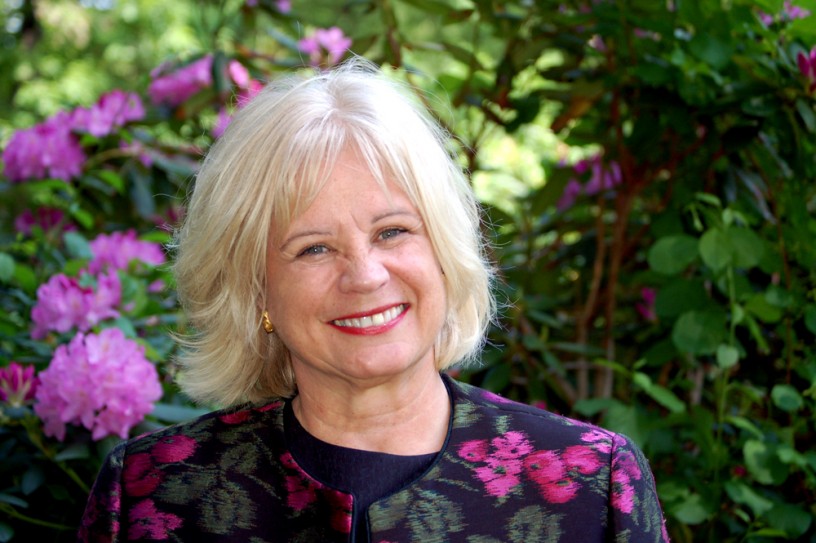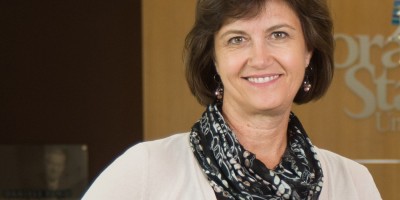In the spotlight:
Name: Patricia Greene
Location: Wellesley, MA and Austin, TX
Occupation: Paul T. Babson Chair in Entrepreneurial Learning, Babson College; Global Academic Director, Goldman Sachs 10,000 Women
You are an influential individual within the entrepreneurship education space. What does ‘entrepreneurship – or enterprise – education’ mean to you, and why do you think it’s important?
I focus on how to be entrepreneurial and we use a very Babsonesque definition – to identify opportunities, organise resources, and provide the leadership to create something of value. I am far more focused on the development of the person than any one business.
How did you first become involved with enterprise education?
Through my dissertation chair, John Sibley Butler. He helped me connect the dots about what I thought was important about today’s world.
How has enterprise education changed over the years, and how does it benefit students today?
Enterprise education has changed drastically, some of it for the better, and some not so much. The field started out decades ago as focused on small business management. For instance, Babson was started largely as a place for the sons of business owners to learn how to take over the business. Over the years the academic field moved more into the start-up phase. More recently I think the media has largely hijacked the discussion and now most schools have followed to focus on high-tech and venture capital, even though that is less than 5% of all the businesses in the US. While I recognise the importance of that small strip of businesses, my work with the Goldman Sachs 10,000 Small Businesses and 10,000 Women has me just as excited about the jobs created and innovations developed by the other 95%.
Can enterprise be included at all stages of education, and within every subject? If yes, how? If no, why not?
Again, my focus is on entrepreneurial behaviour. It doesn’t focus on any one business at any one stage of a person’s life. I do think it should be taught more broadly. After all, most businesses aren’t started by people who went to business school. It also needs to be taught more often outside of post-secondary schools. But that goes back to what I think is important about being entrepreneurial.
How do you evaluate and measure the success of enterprise education generally, and your own practices specifically?
One of my teams used to call me the “Mother of Metrics” because I am so assessment oriented. I start with a clear, shared understanding of what we are trying to accomplish, and then build in the metrics from there. For instance, the 10k programs were explicitly built at the intersection of entrepreneurship and economic development, and therefore job creation and revenue generation were key metrics. In other programs and for individuals, we have them think about what success means to them – both in their business and in their lives. From a purely academic approach, we break the skill set needed into its component parts and develop points of measurement from there. For instance, we once worked very hard (and with multiple iterations needed) to develop a rubric to test opportunity identification. If you can define the goal and define the skill set, you can come up with the appropriate measurement.

Patricia Greene – known by her colleagues as the “Mother of Metrics”! – at Rayburn House, a congressional office building for the U.S. House of Representatives in Washington, D.C.
You are a founding member of the Diana Project, a long-term study of women business owners. How much progress has been made in terms of equality in the entrepreneurship sphere – and what still needs to be done to support female entrepreneurs?
We’ve made tremendous progress in terms of shining a light on the relevant questions related to women business owners. In my mind, the biggest thing that can be done to support female entrepreneurs is to change some of the questions. First, research shows that banks don’t explicitly discriminate again women business owners; however, there is ample evidence that they do so in other subtle ways. The fact is that many banks are just bad at understanding the needs of small business owners, e.g. timeliness on decisions (that’s my personal one as we’re waiting, and waiting, and waiting, for a decision on a bank loan for the purchaser of our store). But here’s the thing – who says the men are doing it right? What is the value being created? We can’t keep discounting the fact that women are often also running another enterprise – a familial entity. I read recently that the value of the work a woman does in a family is between $65k and 120k. Big range. But even at the lower end, if you’d consider that the revenue for her services, and add it to the average revenue of a female-owned business, it would be way higher than the national average.
We do, however, also need to consider the vast discrepancies in the venture capital market. I’m at the point where the data is so compelling that having a woman on the team makes a positive difference that I think investors should consider businesses (including funds) with no women on the team as guilty of malpractice. As a final point, however, we do have to recognise that the driving factor of the enhanced success of mixed-sex businesses and boards has a lot to do with that group’s approach to diversity in general. Businesses that learn that they shouldn’t simply be talking to people just like themselves are smarter and do better.
Where do you hope to see enterprise education in five years’ time?
More inclusive as to types of people, types of businesses or organizations, and types of definitions of success, or value created. I admit I have always wanted to redesign the SBA [Small Business Association of America] so that it is built on entrepreneurship education on top rather than buried down inside. While I very much respect many of the people and programs, it’s built on an antiquated model.
What does a typical day look like in the world of Patricia Greene?
Now that is a funny question. The reason I love my life is that I don’t have a typical day. And if they start looking typical, I change them. I do try and make sure that every day includes something at least remotely exercise-like, then a call or meeting with someone with interesting ideas, some reading, some writing, and hopefully dinner with my husband – with him cooking.
And finally, Patricia, tell us: if you were an animal, what would you be and why?
A pelican because they can fly, they work cooperatively, and they eat a lot of fish. I also like the fact that they look prehistoric, but I’m not sure why I like that!





Leave a Reply